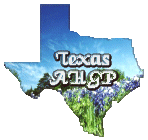Santa Fe Expedition
This expedition to Santa Fe by way of the
plains and deserts of Texas and New Mexico, at that time wholly
unsettled as to Texas, and only scattered ranches, mostly Mexicans,
in New Mexico, was so very perilous and uncertain undertaking, to
say the least of it, and was almost certain to fail and bring untold
suffering and death to many brave men who blindly went into it. It
was not a lawless venture for spoil, as some would seem to think, of
restless men band together for plunder. On the contrary, the
expedition had the sanction of President Lamar and some of the best
men in Texas accompanied it. Further more, the President had
recommended an appropriation by Congress to pay the expenses of the
expedition, but that body failed to do so. The object was said to be
one of a peaceful and commercial feature, to open up a trade with
the people of New Mexico, and to extend the jurisdiction of Texas
over Santa Fe and so much of New Mexico as lay east of the Rio
Grande River. This was a part of Texas as defined by the law of
1836. New Mexico, in her isolation, was largely independent of
Mexico, and was ruled with despotic severity by a few families who
furnished the governors and consumed the substance of the people. A
few Americans who resided in that country had visited President
Lamar in the spring of 1840 and urged a measure of this kind, and
said it would be hailed by the mass of the people as a. great
deliverance from severe thralldom. Although Congress had failed to
provide for the expedition the President had become so imbued with
the idea that he resolved to undertake its execution upon his own
responsibility. Early in the spring of 1841 he began the
preparations. Commercial men were invited to join with stocks of
goods, and. a sufficient number of troops were raised to act as an
escort and to protect the party from Indians, who for hundreds of
miles roamed over the plains at will. Circulars and proclamations
were printed in Spanish, assuring the people that the expedition was
peaceful, and the only wish entertained was to open up peaceful
trade relations and give the people of New Mexico a chance to live
under the liberal laws of Texas. To distribute these circulars three
peace commissioners were appointed to accompany the expedition. They
were Jose Antonio Navarro, a native of San Antonio, and a true, good
man, Colonel William G. Cooke, a man of courage and experience, and,
Dr. Richard F. Brenham, a gallant gentleman born on the soil of
Kentucky. George Van Ness was secretary, and among others was Geo.
W. Kendall, editor of the New Orleans Picayune, who happened to be
in Austin at the time, and went along for a pleasure trip. He
afterwards published a history of the trip in book form. There is something strange connected with this sad history here. This startling intelligence was not sent back to the main body. Howland did get out of prison and attempted to escape so as to convey the news to General McLeod, but was recaptured, and for this effort to save his countrymen was shot in San Maguel by order of Governor Armijo of New Mexico. Howland was one of the Americans who resided in Santa, Fe and had visited Texas and urged the expedition on President Lamar, and by the act in which he lost his life proved himself true to the Texans. |
|

